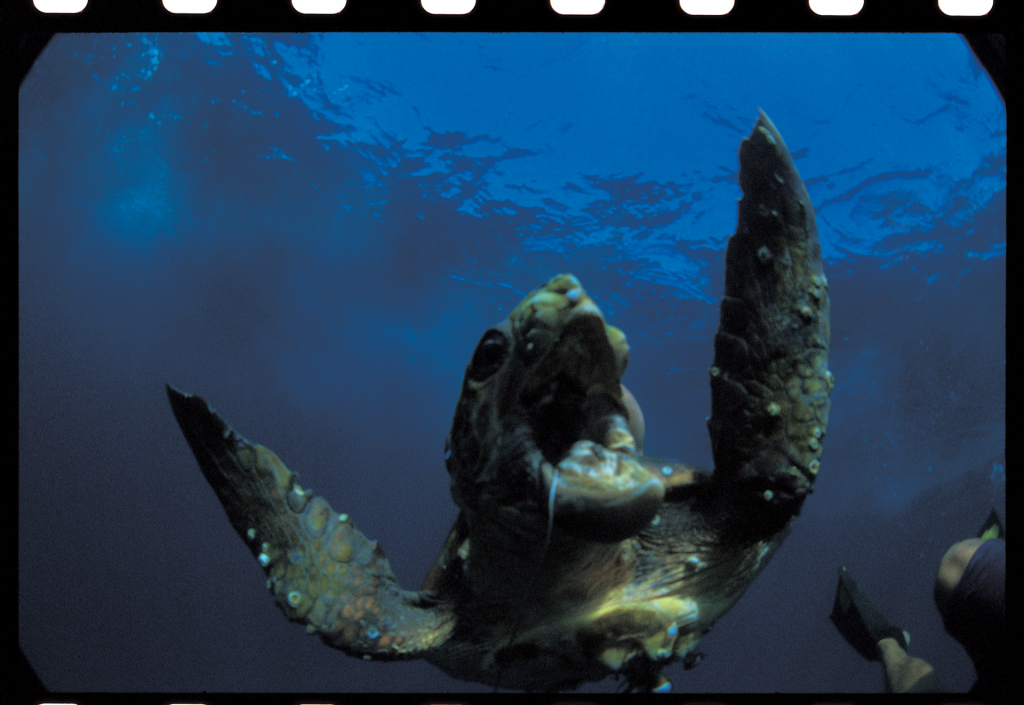Many a love story has started with the colloquialism, “She was always right in my sight, but I just never noticed.” Then, some chance occurrence or event aligns these two people into each other’s orbit.

I, too, was ensnared in such a situation; however, the object of my affection arrived in the form of a loggerhead sea turtle. While seated on my surfboard waiting for waves, I’d often notice a turtle head break the surface and glance my way.
When I’m not surfing or taking photos of the ocean, I’m a fisherman, and when bringing in the nets during winter months it’s not uncommon to have up to five sea turtles mixed in with the catch.
Upon freeing them from the nets, we were in the habit of tagging each with an identification number—not for any particularly scientific reason, but rather just as part of the process during the daily catch. In fact, the nets also yielded the occasional manta ray, sunfish, dolphin, whale or shark.
One day, a senior member of the local fishing community rang in with the abrupt invitation, “What do you think about going to Mexico?” Before receiving much of an explanation and without much thought, for that matter, I emphatically answered, “Yes!” And so the adventure began.
Sea turtles born in and around Japan make the long journey to the other side of the Pacific, specifically Mexico, and live for some 20 to 30 years. They then make the return trip for the purpose of laying and hatching their eggs.
Unfortunately, the sea turtle population has been in a downward spiral for some time with a great many thought to be ensnared and killed in the gill nets used by Mexican fishermen.
The San Diego-based conservationist group Pro Peninsula had, therefore, invited us to Mexico to assist in changing out these gill nets for the fixed netting we use in Japan.
With our Mexican counterparts we were given the opportunity to do a home stay, cast nets, discuss the plight of our aquatic acquaintances and put together a sea turtle festival. We even spent a full day at an area where each year several hundred sea turtles are read their last rites, known locally as the “Turtle Graveyard.”
To think the sea turtles in Japan are actually Spanish senoritas on a trans-Pacific round-trip draws me even closer to their side. With an ever-decreasing beachfront in Japan, leading to an unfortunate drop in the number of eggs laid and hatched, the Sea Turtle Association of Japan has led the charge in not only conservation activities, but also in getting people interested in these beautiful creatures.
The age-old saying, “Ride the rising tide,” refers to when things start moving in the right direction. Let’s hope this is true for my lovely senorita.




